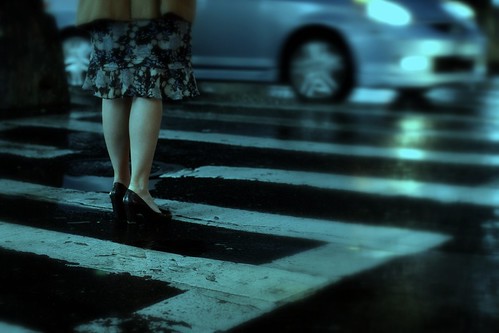Imagine you have an appointment. It’s a blind date. Can you remember such a moment?
You arrive at the agreed time at the agreed place. You look for that folded news paper or red flower.
Then you notice your date. What is the first thing you check?
Be honest what do you do when he or she is not what you were looking for? I know some friends who told me they just walked a way. Some of them fortunately sent an sms message that they wouldn’t manage.
We are facing the same issue when people are visiting our website. Within a split second, to be honest about 4 up to 10 seconds, most people decide what they do, stay or go. But if they go in general they don’t send an sms.
The burning question is of course how to make them stay? The answer is easy: seduce them!
What is your first reaction when you arrive at a website? What do you do? Do you start scrolling directly? Check some titles or is there something else you prefer? Based on eyetracking research we are gaining more and more answers. Today I found a great post by Charlotte van Dael on a Dutch blog, Frankwatching, presenting 10 big wins for your website that were presented during a seminar about website improvements. I will discuss the 4 tips that surprised me the most and that are the most relevant to web design.
1. Follow the web conventions: don’t try to be too original
Especially among graphical designers sometimes there seems to be a competition going on how to be as original as possible. Sometimes this results in beautiful looking, but hard to understand websites. Due to the usage of certain conventions on the majority of websites people got used to them. Of course you could try to surprise them, but the question is whether people want to be surprised. Among others this is what users expect:
- The logo in the left top corner, it should redirect to the home page.
- Search box in the top right corner and make it at least 27 characters wide, otherwise people seem to think they cannot add more characters.
- Link to the contact page at the top right corner of the page.
- Login area at the top right corner.
- Navigation top horizontal or left side vertical.
- Language selection preferably by means of flags and at the top right corner.
- Hyperlinks should be clearly distinguished from the regular text by using a different color, preferably blue and underlined.
Personally I would like to add: “Less is more”. Too often we try to send too many messages and to be honest we are also making this mistake ourselves on a regular basis. It’s just something you need to remind yourself about from time to time.
2. Don’t just rely on the fact that people know how to scroll
When designing a website you have to take your target group into account. Depending on the type of website this might be an easy or a very hard job. Today visitors can be either young and experienced up to old and absolutely not experienced. All these users demonstrate a different behavior.
Research shows that many users on a default landing page do not realize they can scroll down or that their attention decreases under the fold. Therefore, either you make very clear that people have to scroll down, or you try to prevent this. If you want to prevent scrolling you need to design with landscape monitors in mind. An increasing amount of people visit websites by using either a laptop or a wide-screen monitor.
Because most visitors decide within 10 seconds whether they stay or go, you’d better place your important content on top of the page.
Research shows it’s different on content pages. Then it seems to be clear to most people that they will have to scroll, but still there will be a less experienced user group who doesn’t realize this.
3. Don’t make use of capitals, it distracts people
It seems to be a trend to capitalize your titles on blogs and pages and to use capitals inline as well. It occurs that the usage of capitals for whole words or withing sentences decreases the reading speed. In case you would like to achieve this to have the full attention it could be useful, but in general the advice is not to use too many capitals in titles, menu items etc. It seems better to use a distinguishing color or bold.
4. Use the language of your target group
Professionals tend to use the terms they are used to in their daily business. But is this the language of your target group? It is easy to find out what words your visitors are using. Just check the search statistics of your website. Or use Google Trends to find out what words you should use.
What is in your opinion the most essential thing to improve websites?
Please share your opinion below we invite you to leave your experiences, questions, doubts, tips, etc. below.


2 comments
Comments are closed.